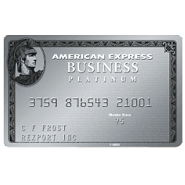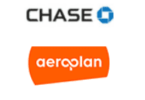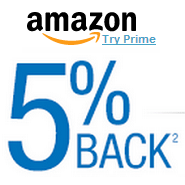With the publicity surrounding the 100,000 Membership Rewards signup offer on the American Express Business Platinum Card, there’s been a lot of buzz about the 50% Airline Bonus this card offers. The gist is that if you use Pay with Points, you get 50% of the Membership Rewards (MR) points you spend back as a rebate, which sounds too good to be true—2 cents per points on cash fares!—and it is if you dig deeper. (note: despite what some blogs would have you believe, this is not a new feature of the Business Platinum Card, as it has been as a 20% rebate and 30% rebate in the past).
This is not to say that the 50% Airline Bonus isn’t very good—it is!—but rather that its value is not all that it appears to be.
Note, January 24, 2018: the 50% Airline Bonus ran from October 5, 2016 to May 31, 2017, before being reduced back to 35%. Those who applied between October 5, 2016 and May 31, 2017 retained the bonus for one year from their account opening date. Since May 31, 2018 is rapidly approaching, you’ll find that the information here is of academic interest, at best.
Caveat #1 – Program Structure
The first caveat is twofold: you must use Pay with Points on an eligible fare to get 50% of your MR back. Obviously, to use Pay with Points, you must use the American Express Travel portal and cannot book directly through an airline. What is an eligible fare?
- First and Business Class tickets with all airlines available with American Express Travel.
- Any fare class with your selected qualifying airline (the airline for which you’ve chosen to receive your $200 Airline Fee Credit).
This means that you cannot get a 50% Airline Bonus on just any fare—and unless you are in the habit of paying cash for first & business class travel, your options are restricted to the airline you’ve selected for the Airline Fee Credit. If you regularly fly out of a hub such as ATL, this can work out quite well for you (although to book fares on Southwest, you have to call in, which is an annoyance). If you aren’t flying out of a hub, this caveat can be very limiting—different carriers will be cheaper for different routes, and this restricts your ability to shop around.
While it still may make sense for non-hub flyers to buy a $300 fare with Pay with Points on their qualifying airline, over a $270 fare with cash on the cheapest airline, wider spreads in price trash your equivalent cpp. If you redeem 30k points for a $300 fare on your qualifying airline (with a 50% Airline Bonus of 15,000 MR points) instead of buying a cash fare at $250, the 15,000 MR for the $300 fare works out to 2 cpp, but the equivalent cpp for the lower fare of $250 is only 1.66 cpp (because you paid more than the lower fare). You haven’t actually gotten 2 cpp for your MR redemption. The equivalent cpp can be calculated using the formula: 2 – [2*(difference in higher and lower fares)/(higher fare)].
A small note: one good thing about the program structure is that (from my understanding) you do not need to have enough points to cover the entire fare to be eligible for the 50% Airline Bonus. If you do not have enough points, the balance of the purchase will be charged to your card. However, you do need a minimum of 5,000 MR points to use Pay with Points.
Caveat #2 – Math
The second caveat dates back to the 5th century BC, to one of Zeno’s paradoxes of motion: in order to travel one meter, a runner must first cover half the distance (1/2 meter), then half the remaining distance (1/4 meter), then half the remaining distance (1/8 meter), and so on. How is it possible for the runner to cross the finish line? Modern mathematics tells us that we can answer this question by finding the convergence of the infinite summation of (1/2)n, which thankfully converges to 1 and enables us all to locomote from point A to point B.
Now, back to that $300 fare you bought for 30,000 MR, with a 15,000 MR rebate. Because you spent only 15,000 MR, you did indeed get 2 cpp for that fare (assuming it was the lowest fare).
However, the stash of MR sitting in your account is not worth 2 cpp. You cannot redeem 100,000 MR for $2,000 worth of flights, and, in fact, it is impossible to actually achieve 2 cpp because of the 5,000 MR point minimum for Pay with Points (although you can get very close).
Let us proceed from a balance of 100,000 MR. Assuming you meet the program rules, you can redeem 100,000 MR for $1,000 in flights, plus 50,000 MR back. You can redeem 50,000 MR for $500 in flights plus 25,000 MR back. You can redeem 25,000 MR for $250 in flights, plus 12,500 MR. You can redeem 12,5000 MR for $125 in flights and 6,250 MR. You can redeem 6,250 MR for $62.50 in flights and 3,125 MR. You cannot redeem 3,125 MR using Pay with Points, so there your journey ends: $1,937.50 in flights from your original balance of 100,000 MR, plus 3,125 MR. Valuing the 3,125 MR at 1 cpp, you have for 1.9375 cpp from the flights and .03125 cpp from the MR* for a total of 1.96875 cpp.
*this value is normalized by dividing by 100,000. Equivalently, you can add 193,750 cents and 3,125 cents (3125 MR at 1 cpp) to get a value of 196,875 cents, which when divided by 100,000 MR gives you 1.96875 cpp.
Using the infinite series I mentioned previously and the 5,000 MR minimum for Pay with Points, we can derive a table of cpp for certain tiers of initial MR balances when using Pay with Points. The only thing that determines your cpp is the initial balance of MR you redeem for flights. If you have 100,000 MR, you can get the same cpp by redeeming 100,000 MR at once for a $1,000 flight, or redeeming 50,000 MR twice for two $500 flights. The derived cpp values work under the assumption that MR point balances under 5,000 are valued at 1 cpp, that you have infinite flights to redeem MR on (and that you don’t redeem MR any other way—you keep redeeming the rebated MR for flights until you’re under 5,000 MR), and that you are getting full value for your MR redemption (i.e. your equivalent cpp is 2).
| Initial MR Balance | Cents Per Point | Term in Infinite Series |
| 5,000 – 9,999 | 1.5 | 1/2 |
| 10,000 – 19,999 | 1.75 | 1/4 |
| 20,000 – 39,999 | 1.875 | 1/8 |
| 40,000 – 79,999 | 1.9375 | 1/16 |
| 80,000 – 159,999 | 1.96875 | 1/32 |
| 160,000 – 319,999 | 1.984375 | 1/64 |
| 320,000 – 639,999 | 1.9921875 | 1/128 |
| 640,000 – 1,279,999 | 1.99609375 | 1/256 |
| 1,280,000 – 2,559,999 | 1.998046875 | 1/512 |
Starting at 5,000 MR, you can get $50 in flights and 2,500 MR, for 1.5 cpp. This corresponds to 2 cpp minus 1/2—the first term in the infinite series (1/2)n. Each tier starts at twice the MR balance of the previous tier, so the next tier after 5,000 MR is 10,000 MR and gives 1.75 cpp (or 2 cpp minus 1/4—the second term). Equivalently (and saving one from having to derive it sequentially), the start point of each tier is 5,000 MR times the reciprocal of the term in the infinite series from the previous tier. So, if you wanted to redeem for a minimum of 1.9999 cpp, you would need term 1/16384 in the infinite series (1.99993896484 cpp); with a previous term of 1/8192, that means your initial MR balance would need to be 40,960,000 MR points.
The important component you may recognize is that your maximum cpp is tied to how many times you can redeem MR because our assumption is that you will always redeem MR using Pay with Points until you are below 5,000 MR. Eliminating this assumption changes your maximum cpp to how many times you can redeem MR and how many times you do redeem MR. If you use 30,000 MR on a fare and keep your rebated 15,000 MR in your account, you’re only at 1.5 cpp for your initial balance—not 1.875 cpp.
Comparison – Chase Sapphire Reserve
It’s well known that combining your Ultimate Rewards (UR) points to your Chase Sapphire Reserve card makes them worth 1.5 cpp when booking through the UR travel portal (this is equivalent to a 33% discount on your booking). Mathematically speaking, you will always come out ahead using MR points vs UR points, if you have the Business Platinum, at least 10,000 MR points, and are booking an eligible fare. However, the flexibility of using UR points on any economy fare (or hotel, or a rental, or packages) is a significant plus for the CSR. Every evaluation is subjective, but in my opinion? 1.5 cpp on UR bookings beats the 50% Airline Bonus on the Business Platinum every day of the week.
Hat tip to u/pizzywoah‘s now-deleted thread for inspiring me to type up my thoughts on this.







FYI, if you book Southwest via phone, there’s a booking fee of about $30. I was able to book it manually on Southwest.com and called in to use the points. Not sure if that was an exception or not.
Fair points certainly (and ones not being made critically enough for a $450 card!), but a couple caveats:
1. A lot of domestic F/J fares have come waaaaaay down. I’m happy to pay (the equivalent of) an extra $50-100 to sit up front on a lot of itineraries. This somewhat mitigates the risk of being locked to one airline.
2. The math is fine, but you’re ignoring that MR have other productive uses, e.g. transfers to AC. Subjective to value those certainly, but it’s not as if the only alternative use for MR is a 1cpp cash-equivalent airfare redemption.
I’m probably in a less common situation, but my local airport only services AA. After years of driving 2.5 to 4 hours to get to larger airports, I’ve decided my time and sanity will now take priority. By using my BPlat, I can at least get a better bottom line on AA coach domestic flights (as compared to cash, or UR or other points); for international flights, I can also choose AA partners for business or first class. As everyone says, different situations equal different choices. (But I still love UR for hotels and tours/activities.)
Your math is all accurate of course, but I think you’re writing the card off a little too quickly. For those of us who frequently fly one particular airline (mostly, those of us living near a hub), it’s pretty easy to get near the max cpp from your chart. Also, our marginal MR points are easy to redeem for the full 2 cpp (it’s only our small terminal points balance that gets stuck at 1 cpp).
Good analysis, but I don’t think I agree with its conclusions in every case. In particular, if you’re simply looking for an award ticket for a domestic redemption, and you live in a city served well by multiple airlines, then selecting UA or AA as your designated airline significantly expands your redemption options, thereby significantly increasing the value of MR.
Whether or not you’re getting less a full 2cpp relative to paying cash on another airline is besides the point, because you don’t want to spend cash, you want to redeem for a reasonable number of points so that you have more points left for doing other things with.
If you transfer to partners, you might do much better than 2cpp, but with less availabilty. So this provides a nice baseline, on at least one airline, redemption when you need flexibility.
And, if you choose an airline like Delta or JetBlue, you’re likely to need fewer points to redeem a ticket, and you’ll earn towards status.
If I had to choose only between UR and MR, I’d still probably choose UR for the reasons cited in the analysis, but the biz plat makes it a real decision, as opposed to Chase being the obvious choice.
Great write up! For me, I used MR points to purchase cheap biz fares on Qatar and AA. Recently I booked QR BKK-LAX for $1,485 / 148,566 points and after the 50 percent off = 74,283 points. When I credit the flight to AA as EXP the yield will be 50,899 miles earned, 34,704 elite qualifying miles. and $4,627 elite qualifying dollars. Another fare I purchased was AA YYZ-PEK biz with some crazy routing from China and across the US for 22,506 “butt-in-seat” miles. It was $1,910 USD / 191,042 points and after the 50 percent off = 95,521 points. That is 45,012 elite qualifying miles for AA or 33,759 for AS.
Another thing to consider with all points that used on a travel portal for a better value: You don’t get cashback or points on those purchases. If you have a Citi Double, 1 UR worth only ¢1.47 through CSR, if you have a Discover It Miles with match, it worth ¢1.455. For AmEx MR, get the number from the table in the article and multiply by 0.98 / 0.97.
One can even argue that you don’t get 3 UR from a flight ticket paid by UR points, what is even more than 3% “loss”, but that’s a recursive definition and I don’t want to calculate it 🙂
Probably doesn’t matter much, but note this difference is bigger than the difference of valuation of 40k and 80k MR points.
Thanks for the hat tip!
Can’t argue with anything you have written, but in the right context, I think this card is fantastic. That context is when you are in a captive hub and know your airline and/or when you have your eyes on some F or J fares. Other parts of the context are when you have some big spends to make: the Amex Business Plat gives you a 1.5x on purchases > $5,000. Last month, when I had to pay some tuitions, and saw where Plastiq was coding as a Small Business, I had to pinch myself. Spend I would otherwise not have put on a card was suddenly making me planned airfare. Also, there is a parlay if you are buying airfares with the other Amex Plat at 5x. Mid-summer I had <10,000 MR points and was debating keeping the original Amex Plat. Fast-forward 6 mos. and a couple of Business cards and I am closing in on 300,000 points and looking forward to a couple of J and F long-hauls for <$850 in out-of-pocket costs. This has been the great bright spot as both AA (EQDs) and Hyatt (WoH) kick me to the curb!
Smart man, Biggie F. I earned tons on the small business promo on this card. I used it to buy Emirates paid F to get to a destination when I could not get an Emirates award ticket all the way there. When I flew it they treated me as if the whole thing were paid F (award f and paid F) powerful tool to complement the MR program.
Not everyone can get the CSR. But just because you can’t get the CSR right now doesn’t always mean you should use your freedom/existing UR earner explicitly to hoard up points for the future. Who knows what nerfs may happen to the CSR? Anything is possible. I personally think if you have one set airline (seems like most people have a favorite), you would earn 5x points on the personal platinum, maximize the EDP for its 3x and 4.5x MR categories, also use the Amex Blue for biz 10000 MRs after first purchase, plus 10x rewards on 2k in dining the first 6 months, 2x rewards on everything up to 50k, plus 30 percent dividend at the end of the year and 0% for 12 months. So 2.3 mr for anything the first year. Add in the enhanced biz plat, and you also get $160-$600 worth of in flight wifi passes, more travel credits to offset the AF, plus seems easier to earn amex bonuses, and so forth. By all means if you can get chase then that should always be your top priority. But you have to also think about how long you have points sitting. I am starting to do this more often since I am kind of a point hoarder who needs to take more vacations. But most of the time if I am flying it is on Alaska non rev positive space. I think it is worth considering calculating the amount of money you would earn had you cashed out all your rewards either UR or MR and had those sitting in a high yield 5% account. Easily $260 a year per 5k. But first class flights that have a high return would always beat cashing out, even hotel redemptions as well. If you generally travel domestic, transferring MR to flying blue (i believe UR, MR, TYP, and SPG all are xfer partners) can be a great way to save points. I am also noticing 1.2cpp membership rewards insider fares, not the best but could come in handy if the fare is fair and you are in a pinch? Is the general consensus that chase will always continue to offer lucrative sign on bonuses so long as <5/24? I certainly would have no problem maxing out more than one freedom 5x categories, which is why I have slowed down on opening new accounts. I am also very glad I had so many awesome deals at christmas with macys. I probably say that too often, but I was left with a good feeling. The 50% plenti transfer bonus, paired with multiple $10 dollar items that came with $10 in macys cash (and many 5 with 5), as well as doing dozens of $20 and $10 retailmenot rebates after spending $50+ in plenti points, or even just macys cash. I should sit down and calculate my actual cpp return. With all the amex offers across multiple charge and revolvers, I don't seem to have lost that many points.… Read more »